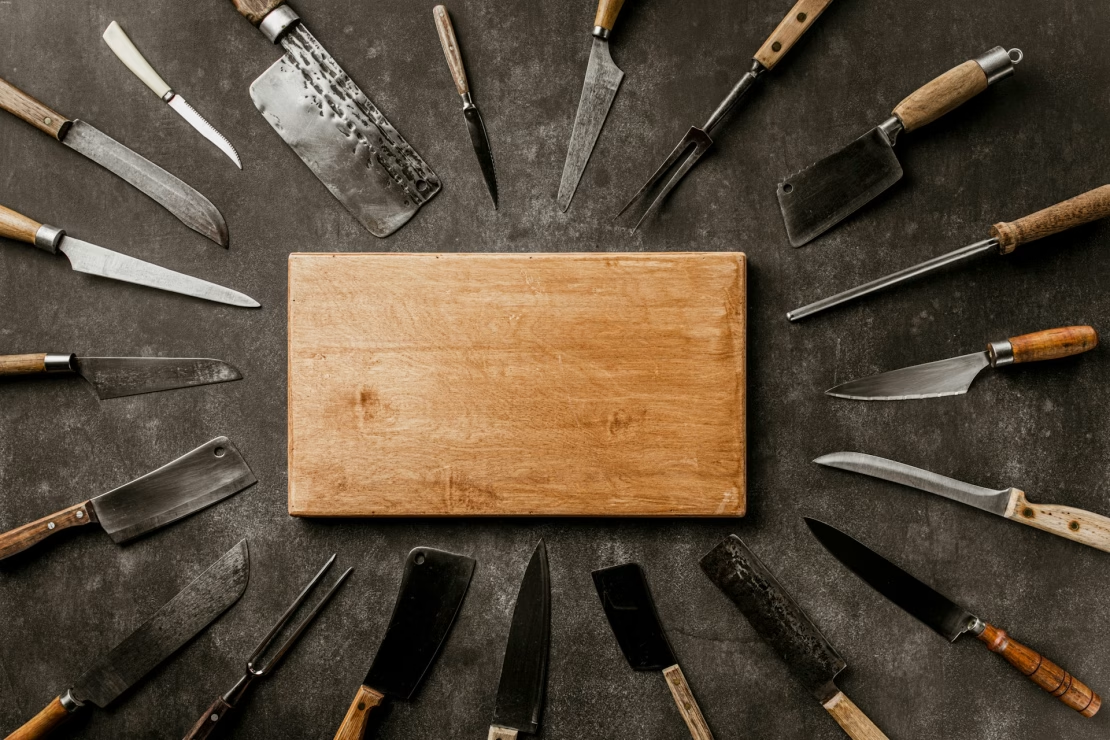Master the art of cutting board care with hygiene tips and maintenance tricks to preserve durability and extend lifespan.
For maintaining a cutting board used for chopping vegetables and meat, it’s recommended to use food-grade mineral oil or cutting board oil. These oils are colorless, odorless, and tasteless, making them safe for food contact. Mineral oil helps to condition and protect the wood, preventing it from drying out and cracking. It also creates a barrier that helps repel water and other liquids, reducing the risk of bacterial growth.
Here’s how you can maintain your cutting board with mineral oil:
Table of Contents
How to Maintain and Oil Your Board for Safe Food Preparation
- Clean the cutting board: Wash the cutting board with mild soap and warm water. Scrub it with a brush or sponge to remove any food particles or stains.
- Dry the cutting board: Allow the cutting board to air dry completely.
- Apply mineral oil: Pour a small amount of food-grade mineral oil or cutting board oil onto the cutting board. Use a clean, dry cloth or a paper towel to spread the oil evenly over the surface of the board. Make sure to coat all sides, edges, and corners.
- Let it absorb: Allow the oil to absorb into the wood for a few hours or overnight. This allows the wood to soak up the oil, helping to moisturize and protect it.
- Wipe off excess: After the oil has had time to absorb, use a clean, dry cloth to wipe off any excess oil. You want to leave a thin, even layer on the surface.
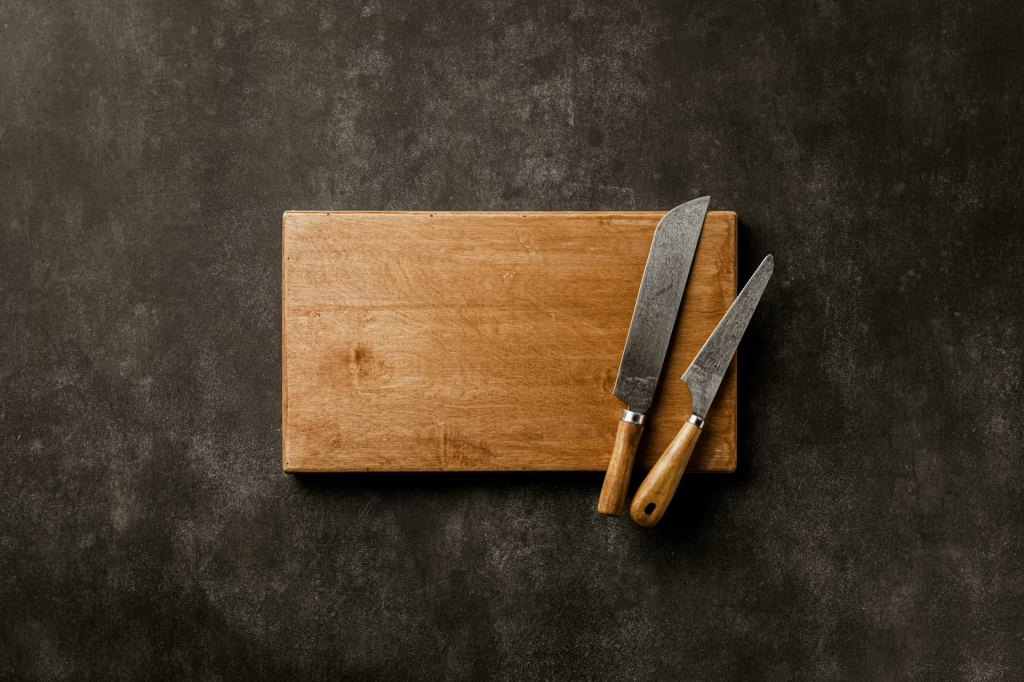
It’s essential to repeat this process regularly, depending on how often you use the cutting board. This helps to keep the wood in good condition and prolong the life of the cutting board. Additionally, using mineral oil specifically labeled as food-grade ensures that it is safe for contact with food.
Other alternatives
If you’re looking for a cost-effective and homemade alternative to mineral oil for treating your cutting board, you can use food-grade oils that are readily available in your kitchen. Here are a few options:
- Vegetable Oil:
- Vegetable oil, such as canola or grapeseed oil, can be used to condition your cutting board. These oils are affordable and generally available in most kitchens.
- Coconut Oil:
- Coconut oil is another good alternative. It has natural antibacterial properties and a pleasant scent. Use virgin or refined coconut oil, and warm it slightly if it’s solid at room temperature.
- Olive Oil:
- Olive oil is a common kitchen oil that you can use to condition your cutting board. However, keep in mind that it has a distinct aroma, so it might impart a slight olive oil fragrance to your board.
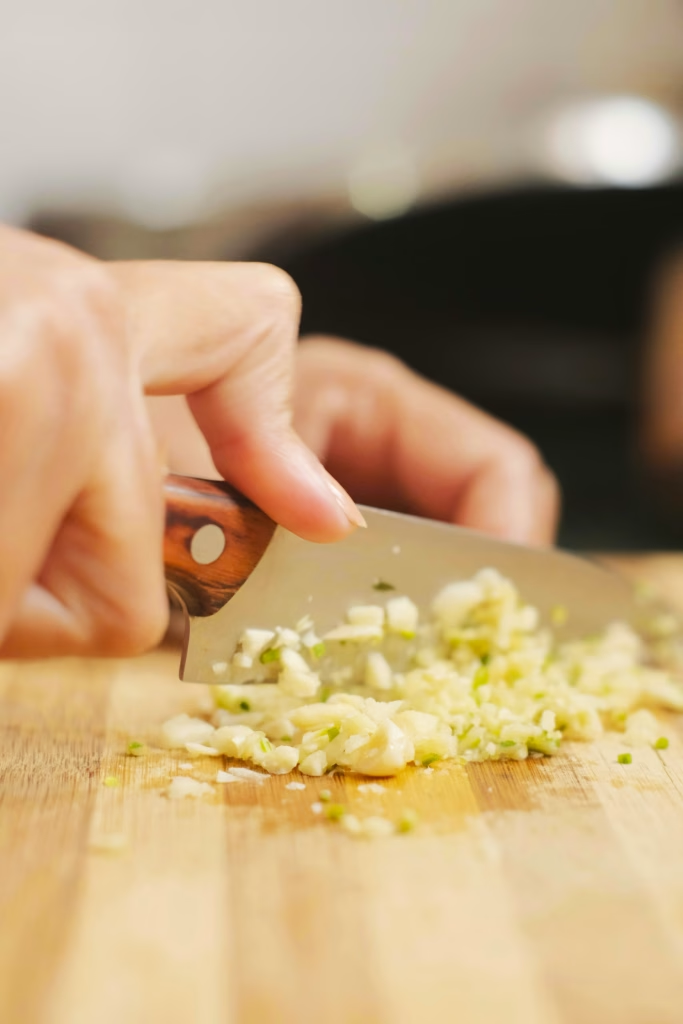
When using these alternatives:
- Apply a small amount of oil to the cutting board.
- Use a clean, dry cloth or paper towel to spread the oil evenly over the entire surface of the board.
- Allow the oil to absorb into the wood for a few hours or overnight.
- Wipe off any excess oil with a clean, dry cloth.
It’s important to note that vegetable oils can turn rancid over time, so it’s a good practice to reapply the oil periodically and store your cutting board in a cool, dry place to prevent it from going bad. While these alternatives may not provide the same level of protection as mineral oil, they can still help condition and moisturize the wood of your cutting board.
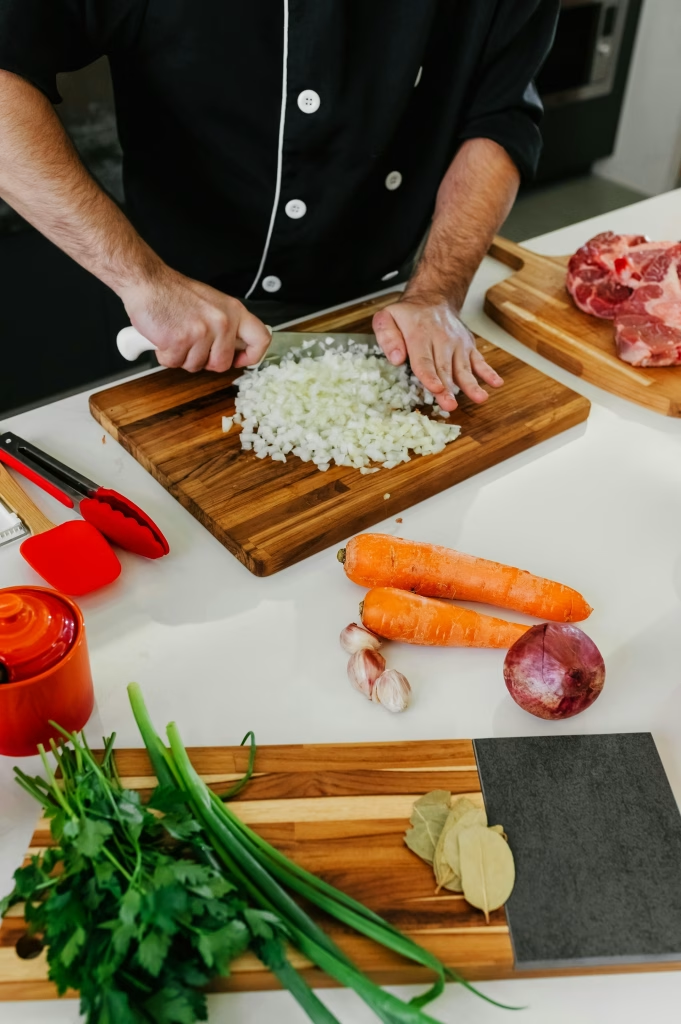
History
The humble cutting board has been a kitchen staple for centuries, evolving from simple slabs of wood to a variety of materials including plastic, bamboo, and composite materials. Historically, cutting boards were primarily made from wood due to its abundance and ease of carving.
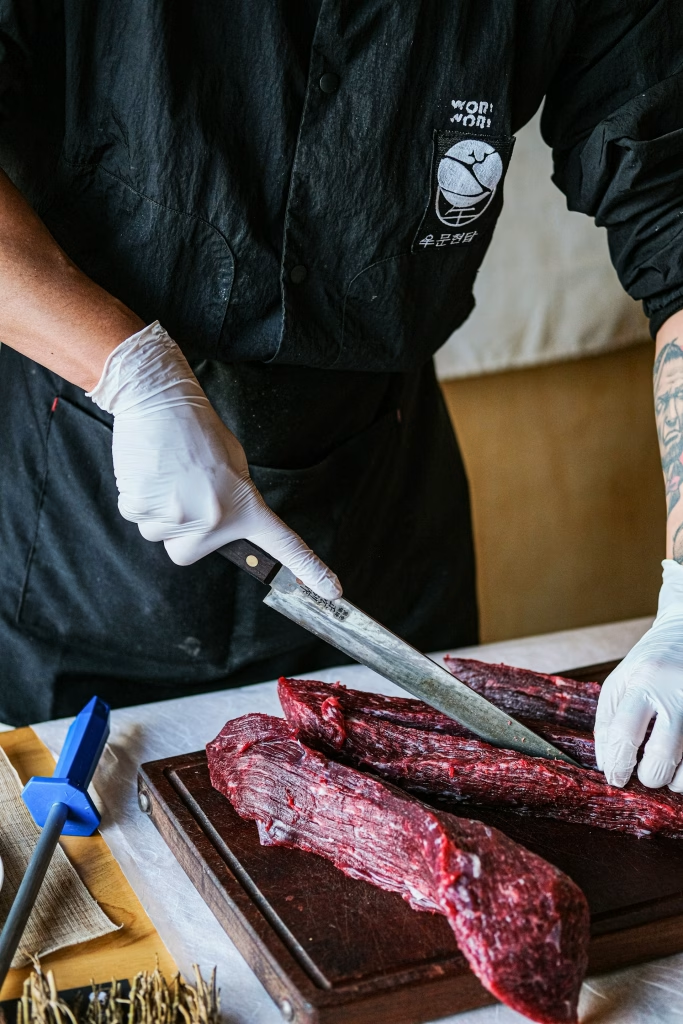
In ancient times, they were essential tools for food preparation, used for chopping vegetables, slicing meats, and kneading dough. Over time, as culinary practices evolved, so did cutting board designs and materials. Plastic cutting boards gained popularity in the mid-20th century due to their affordability, ease of cleaning, and resistance to moisture.
However, concerns about their environmental impact and potential for harboring bacteria led to a resurgence in the use of wooden cutting boards, prized for their natural antimicrobial properties and aesthetic appeal. Today, cutting boards come in various shapes, sizes, and materials, catering to different culinary preferences and kitchen aesthetics.
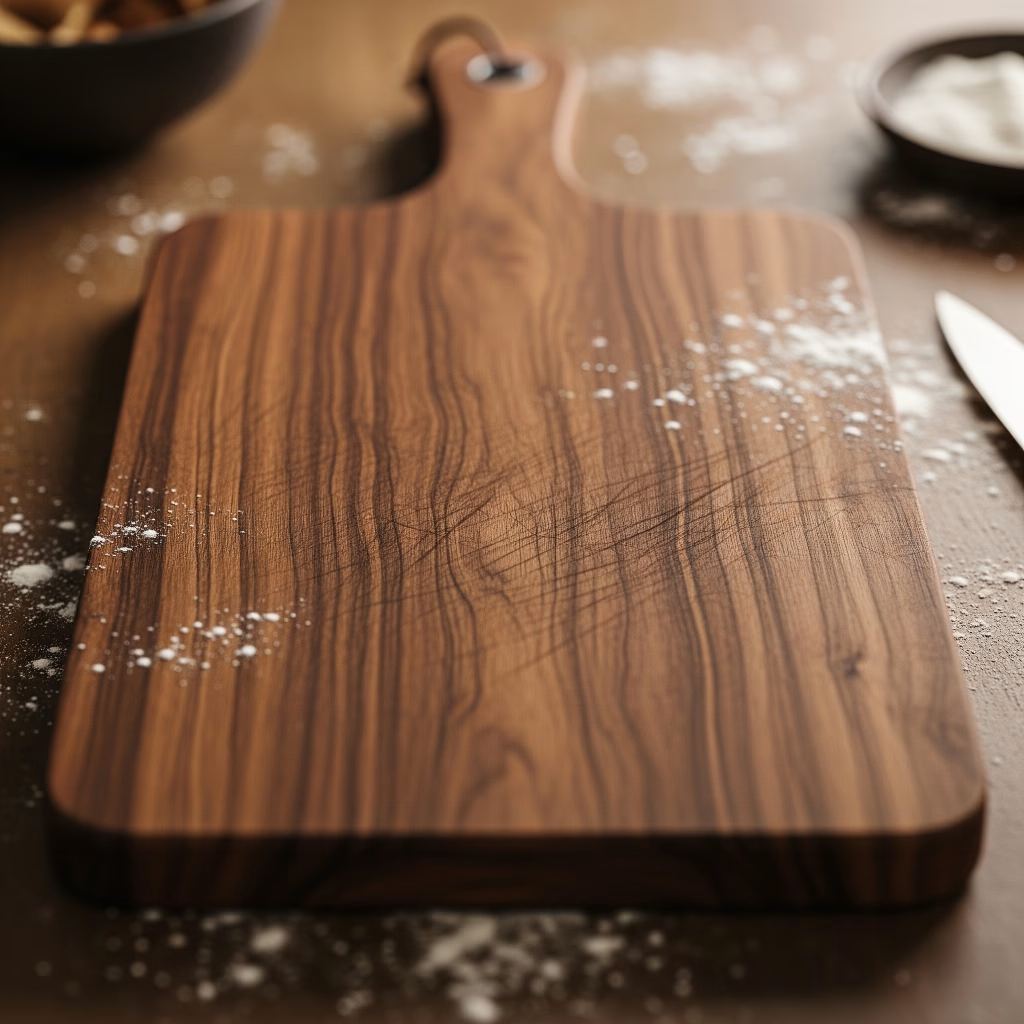
Proper care and maintenance are essential to prolong the lifespan of cutting boards, ensuring they remain safe and hygienic for food preparation.
FAQs about Cutting Board Care
1. How do I clean my cutting board properly?
- For wooden cutting boards: Wash with mild soap and warm water, scrubbing gently with a sponge or brush to remove food particles. Rinse thoroughly and air dry.
- For plastic cutting boards: Wash with hot, soapy water or run through the dishwasher. Avoid using abrasive cleaners or scouring pads that can damage the surface.
2. Can I use bleach to disinfect my cutting board?
- For plastic cutting boards: Yes, you can disinfect plastic cutting boards by soaking them in a solution of one tablespoon of bleach per gallon of water for a few minutes, then rinse thoroughly.
- For wooden cutting boards: Avoid using bleach or harsh chemicals, as they can damage the wood. Instead, sanitize wooden cutting boards by rubbing them with a cut lemon or a solution of vinegar and water, then allow them to air dry.
3. How do I remove stains and odors from my cutting board?
- For wooden cutting boards: Sprinkle coarse salt or baking soda over the surface, then scrub with a lemon half or a paste made from lemon juice and baking soda. Rinse and air dry.
- For plastic cutting boards: Soak the board in a mixture of vinegar and water, or hydrogen peroxide and water, then scrub with a paste made from baking soda and water. Rinse and air dry.
4. Can I use my cutting board for cutting raw meat, poultry, and seafood?
- Yes, but it’s essential to use separate cutting boards for raw meat, poultry, seafood, and ready-to-eat foods to prevent cross-contamination. Wash cutting boards thoroughly between uses.
5. How often should I oil my wooden cutting board?
- Wooden cutting boards should be oiled regularly to maintain their condition and prevent drying and cracking. Apply food-grade mineral oil or butcher block conditioner every few weeks or as needed, allowing the oil to penetrate the wood before wiping off any excess.
6. Is it safe to use a damaged cutting board?
- No, using a damaged cutting board with cracks, gouges, or deep scratches can harbor bacteria and compromise food safety. Replace damaged cutting boards promptly to ensure safe food preparation.
7. Can I use my cutting board as a serving platter?
- Yes, many cutting boards double as stylish serving platters for cheeses, charcuterie, fruits, and other appetizers. Just make sure to clean and sanitize the board thoroughly before and after use.
8. How do I store my cutting board properly?
- Store cutting boards in a clean, dry area away from direct sunlight and sources of heat to prevent warping and cracking. Consider storing them upright or hanging them to allow air circulation.
By following these tips and guidelines, you can keep your cutting boards clean, hygienic, and in excellent condition for years to come, making them indispensable tools in your kitchen arsenal.


